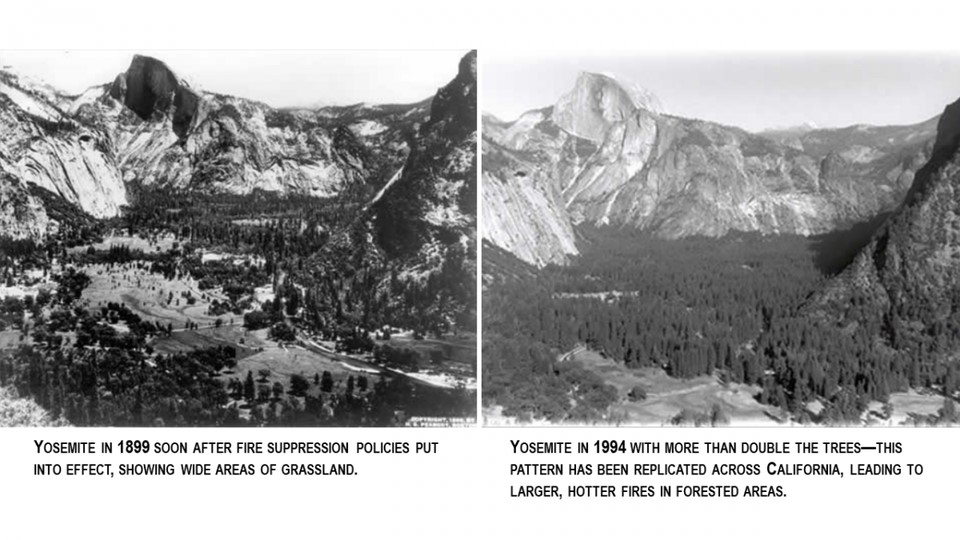That’s what the repoter said.
Actually weeds and brush needs to be cleaed out for fire season."
That's correct. This isn't about CA's dry summer weather. That's just the way CA is, at least during the last several hundred years based on tree ring studies among others.
This is primarily about forest management...or the lack thereof.
California's Devastating Fires Are Man-Caused -- But Not In The Way They Tell Us
Chuck DeVore Texas Public Policy Foundation VP and former California legislator | Jul 30, 2018, 06:11pm…
As timber harvesting permit fees went up and environmental challenges multiplied, the people who earned a living felling and planting trees looked for other lines of work. The combustible fuel load in the forest predictably soared. No longer were forest management professionals clearing brush and thinning trees.
But, fire suppression efforts continued. The result was accurately forecast by my forest management industry hosts in Siskiyou County in 2005: larger, more devastating fires—fires so hot that they sterilized the soil, making regrowth difficult and altering the landscape.
…
In 2001, George E. Gruell, a wildlife biologist with five decades of experience in California and other Western states, authored the book, “Fire in Sierra Nevada Forests: A Photographic Interpretation of Ecological Change Since 1849.” Gruell’s remarkable effort compared hundreds of landscape photographs from the dawn of photography with photos taken from the same location 100 years later or more. The difference was striking. In the 1850s and 1860s, the typical Sierra landscape was of open fields of grass punctuated by isolated pine stands and a few scattered oak trees. The first branches on the pine trees started about 20 feet up—lower branches having been burned off by low-intensity grassfires. California’s Native American population had for years shaped this landscape with fire to encourage the grasslands and boost the game animal population.
...
https://www.forbes.com/sites/chuckdevore/2018/07/30/californias-devastating-fires-are-man-caused-but-not-in-the-way-they-tell-us/#12e10f0370af
The Lights Are Out in California, And That Was the Plan All Along
By Chuck DeVore | October 9, 2019...
They ignore the fact that annual precipitation totals over the past 100 years show no statistically meaningful trend.
…
But California, unlike the rest of the nation, receives most of its moisture in the winter and the months bracketing it, while getting precious little rainfall during the summer. Further, California is drought-prone, and has been for as long as scientists can determine from tree rings and sediment records.
The bottom line is that California has always had a high threat from wildfires and always will. The issue is how will that threat be managed, accommodated, or avoided?
…
To better understand how we came to today’s blackout, it is useful to look to the past. When the gold rush led to modern California, early photographers chronicled the landscape. In George E. Gruell’s 2001 book, “Fire in Sierra Nevada Forests: A Photographic Interpretation of Ecological Change Since 1849”
…
For decades, up until the 1970s, California would harvest and replant about as much wood as could be grown through an abundance of sunshine, snow, and rain. But in the 1990s, concern over logging’s effect on the spotted owl (largely misplaced, as time would tell) led to a massive slowdown in the timber harvest, especially on the federal lands that make up about 60 percent of California’s forests. With a decline in the harvest came a decline in the allied efforts to clear brush, build and maintain access roads and firebreaks. This led inexorably to a decades’ long build-up in the fuel load. Federal funds set aside for increasingly unpopular forest management efforts were instead shifted to fire-suppression expenses.
All of this was clearly foreseen by the Western Governors’ Association 13 years ago when it published a Biomass Task Force Report that accurately predicted: “over time the fire-prone forests that were not thinned, burn in uncharacteristically destructive wildfires… …In the long term, leaving forests overgrown and prone to unnaturally destructive wildfires means there will be significantly less biomass on the ground, and more greenhouse gases in the atmosphere.”
https://thefederalist.com/2019/10/09/the-lights-are-out-in-california-and-that-was-the-plan-all-along/
